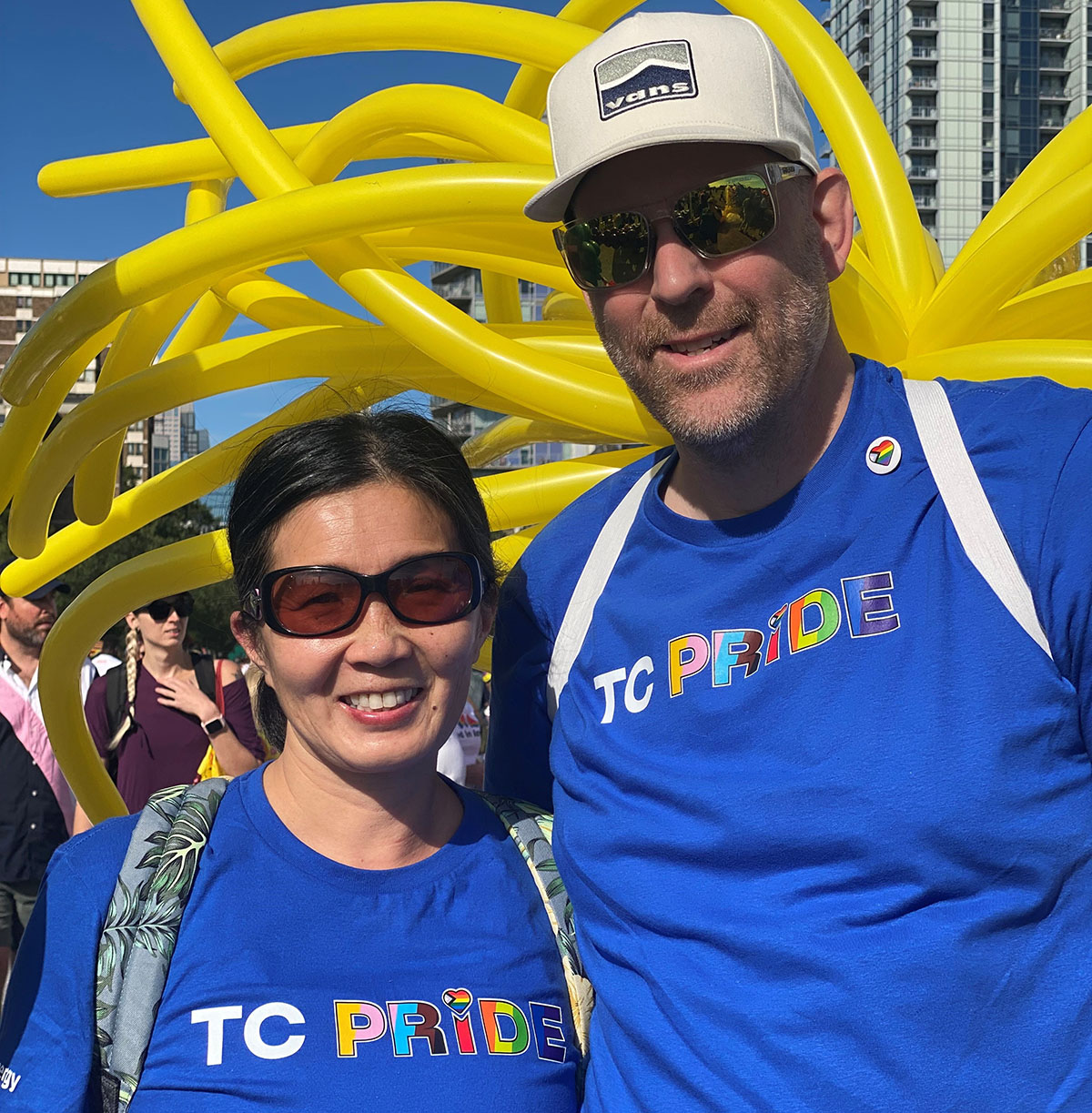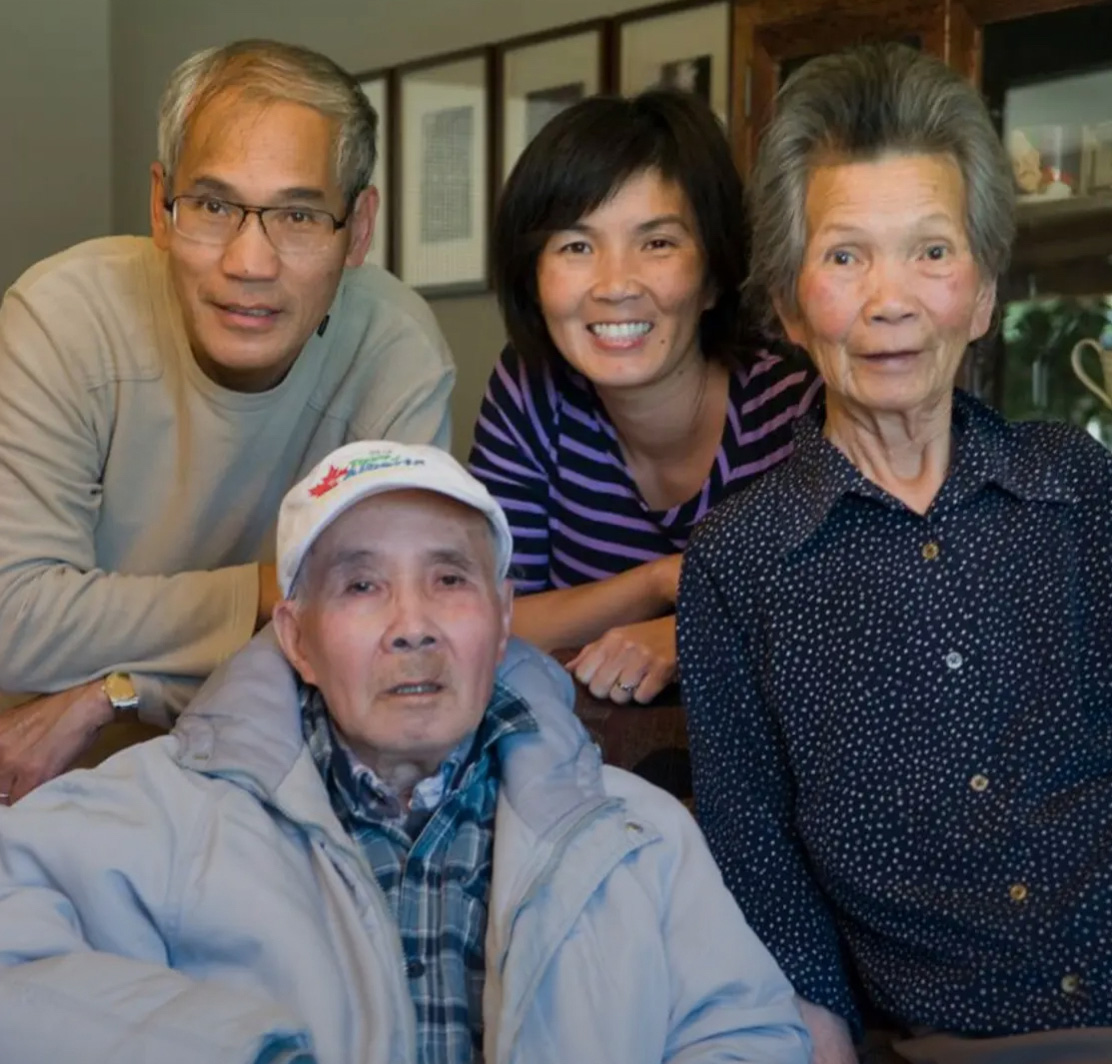Asian and Pacific Islander Heritage Month: This is me, Pat
Last updated on May 6May is Asian and Pacific Islander Heritage Month, a month dedicated to honouring the history and traditions of Asian and Pacific Islanders (API) communities. This month provides an opportunity to reflect on the resilience and achievements of these communities while advancing inclusivity and belonging.
This year, we spoke to Pat Tong, an Information Services (IS) Business Partner who shared her story of balancing tradition and change.
Meet Pat
My name is Pat, and I’m an IS Business Partner and have been at TC for the last seven years. I graduated from the University of Calgary (go Dinos!) with a degree in geography. I love playing tennis, running and cycling for local charities and spending time with my husband, Ryan, and our two cats and dog.

Pat and her husband participating in the Calgary Pride Parade with TC Energy.
Between two worlds
In search of better opportunities, my dad and grandfather were the first in my family to arrive in Canada in 1953, making the long journey from China to Vancouver, BC, by boat. My grandfather passed away shortly after, and my dad worked tirelessly as a potato farmer and short-order cook. After nearly two decades of separation and sacrifice, my mom and brother finally joined him in Canada in 1971. I was born soon afterwards.
I grew up in North Bay, ON, until age nine, when we moved to Alberta during the 1980s oil boom. As a second-generation1 Canadian, I often found myself balancing two distinct worlds – traditional Chinese values and the new cultural dynamics that came with living in Canada.
At home, traditional Chinese values were ingrained by my much older brother, who had been raised in China by our grandmother and mother. As a parental figure in my life, he was serious, disciplined and had high expectations, reflecting the deep-rooted focus on academic importance often seen in Asian households. His guidance sometimes felt strict, but looking back, I now see how much it was driven by love and a desire to see me succeed.
My parents, on the other hand, were more relaxed, allowing me to pursue sports like tennis, volleyball and badminton throughout my school years. Their openness laid the foundation for my unique blend of cultural identity – balancing traditional values and new cultural experiences.

Pat with her parents and older brother.
Growing up different
Being Asian in the 1970s and 80s in Canada wasn’t easy. In elementary, I was often the only Asian in my class or on my sports teams and being different felt isolating. My instinct was to fight to fit in, and I built walls around my heritage as a way to blend in. I distanced myself from my roots, feeling like I had to ignore the obvious “I did not look like everyone else” to belong. Part of this disconnect also stemmed from not being fully fluent in Chinese. And although my family celebrated traditional holidays like Chinese New Year and the Harvest Moon Festival, these were small, intimate gatherings – just the four of us with enough food for 30 people, I like to say.
It wasn’t until high school and university that I began to let my guard down. The campus was a melting pot where I felt more comfortable exploring aspects of my cultural identity.
Reconnecting with heritage
Today, I’m making reconnecting with my culture a priority. I’m speaking more Chinese with my mom, teaching myself to read basic Chinese characters and attending cultural events in Calgary where I can learn traditions like how to play mah jong from community elders. I’ve started asking my mom to share more recipes and stories about our family history. While she doesn’t talk much about hardships, I now have a deeper appreciation for my family’s history. My dad, for instance, worked tirelessly in a new country while enduring separation from loved ones for nearly two decades. Only later, as dementia took hold, could I see glimpses of old struggles, like his fear of anyone in uniform.
I continue to celebrate Chinese New Year and the Harvest Moon Festival, now with a deeper appreciation for what these traditions represent. My mother always emphasized the importance of gathering with family and sharing the plentiful harvest from her garden. Sharing my culture with friends and exploring it with my husband has also been a meaningful way for me to stay connected to my roots.
Why I celebrate
Asian and Pacific Islander Heritage Month holds special meaning for me as it reminds me of everything my family sacrificed to give me a better life. They taught me resilience, grit and unwavering work ethic, and I honour their legacy by sharing our story. This month is also about lifting up other voices in the community. We can celebrate our stories, embrace our heritage, and share the unique journeys that define who we are.
My own journey has taught me that it’s never too late to embrace your heritage and that finding balance between tradition and change is an ongoing process.
1A second-generation individual is generally a person born in a country different from that of their parents, who emigrated from their country of origin.